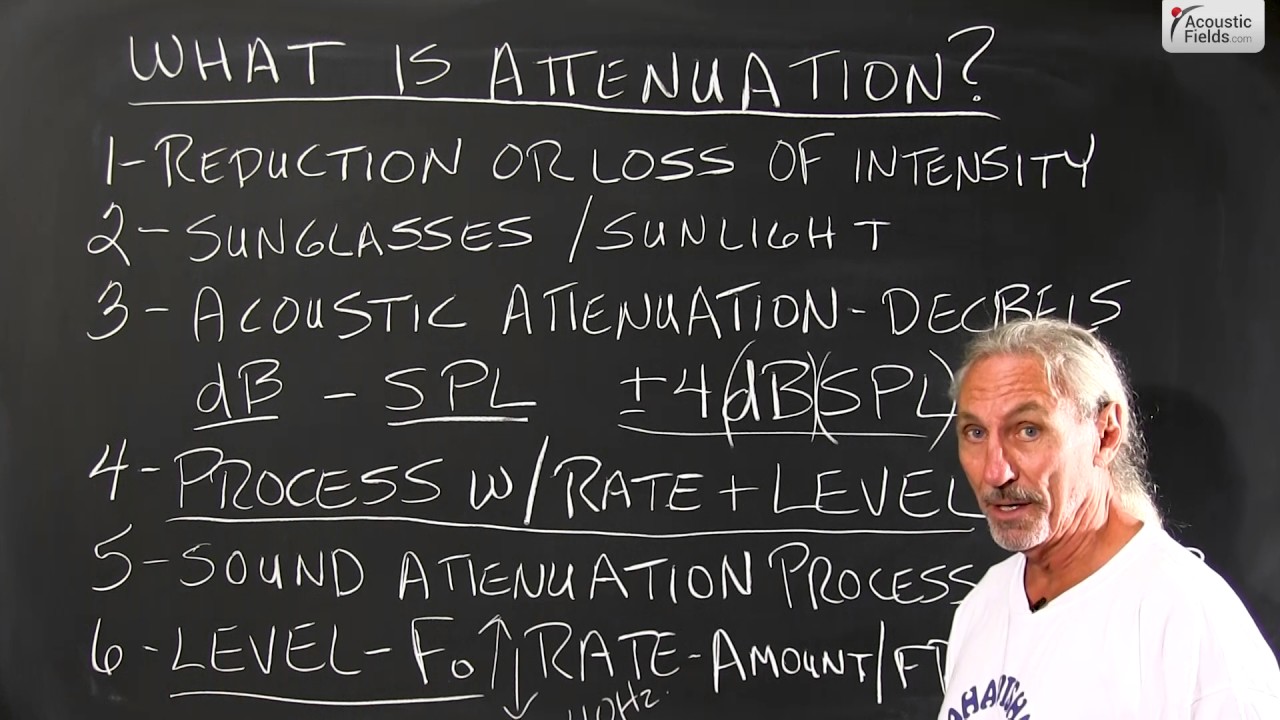Attenuation. It’s a word that gets bounced around a lot and a lot of my customers try to use it and I can sense that they’re little confused about it. So we’re going to work on definitions and hopefully this will clarify everything. It’s not complicated but let’s walk through some of the steps.
Attenuation is a reduction or loss of intensity or energy. So when we attenuate, we’re losing and I guess it’s kind of hard and difficult to understand. I think I kind of understand, maybe a lot of my clients use attenuation to mean boosting or more but it’s really a loss or reduction in energy. What do sunglasses do to sunlight? They attenuate it. So they lower the amount of sunlight that you get on your eyes. So that will help you.
In acoustics it’s all about sound energy. So you’ve seen the term decibel. Well, there’s the symbol for decibels and that’s how we measure the acoustic attenuation of sound. You always see things written, plus or minus 4 dB, SPL sound pressure level and dB is our unit of measure. So those two always go together. So we have to realize that attenuation is a process and in that process there’s rate and level. And I think this is the confusing part for people.
So let’s talk about how we work with rate and level. I’ve got 5 and 6 kind of upside down but that’s okay. Level. And when you build a product to absorb energy, level is the frequency of residence or how low that product will go. And then energy above that number is absorbed, the energy below is not.
So let’s say we design a product that goes down to 40 cycles. Okay? We design a product that goes down to 40 cycles. Everything above 40 will be absorbed, everything below 40 will not be. So that’s the level of absorption that that product produces. The rate is how much it absorbs at each frequency above that level. So attenuation is a process that has rate and level associated with it. It’s frequency dependent, there’s a lot of variables that go with it so there’s not any one-size-fits-all, as always with acoustics.
In summary we want to realize that attenuation is kind of like entropy, it’s depletion of energy from a system, based on what we’re doing in the process of absorption. So attenuation, a good word, a good way to define and think about it is loss. So that’s what we want to think about. Not gain, but loss. I think that’s easier in our audio world to think about.
—
This is an unedited transcript from our video series from Acoustic Fields. There will be some errors in grammar and sentence structure that occur during this translation process.
For complete understanding and comprehension, please view the video which is included in this text. For any additional information regarding this topic or others relating to room acoustics, please contact us directly at:
P: 520 – 392 – 9486








The discussion on ductwork noise transmission from Acoustic Fields highlights crucial aspects of HVAC system acoustics. The movement of air…
Great build plans. thank you Denis
You must use absorption. Never place a chair against a wall.
A friend and I built several diffusors using these plans and they turned out absolutely beautiful. Very good instructions and…